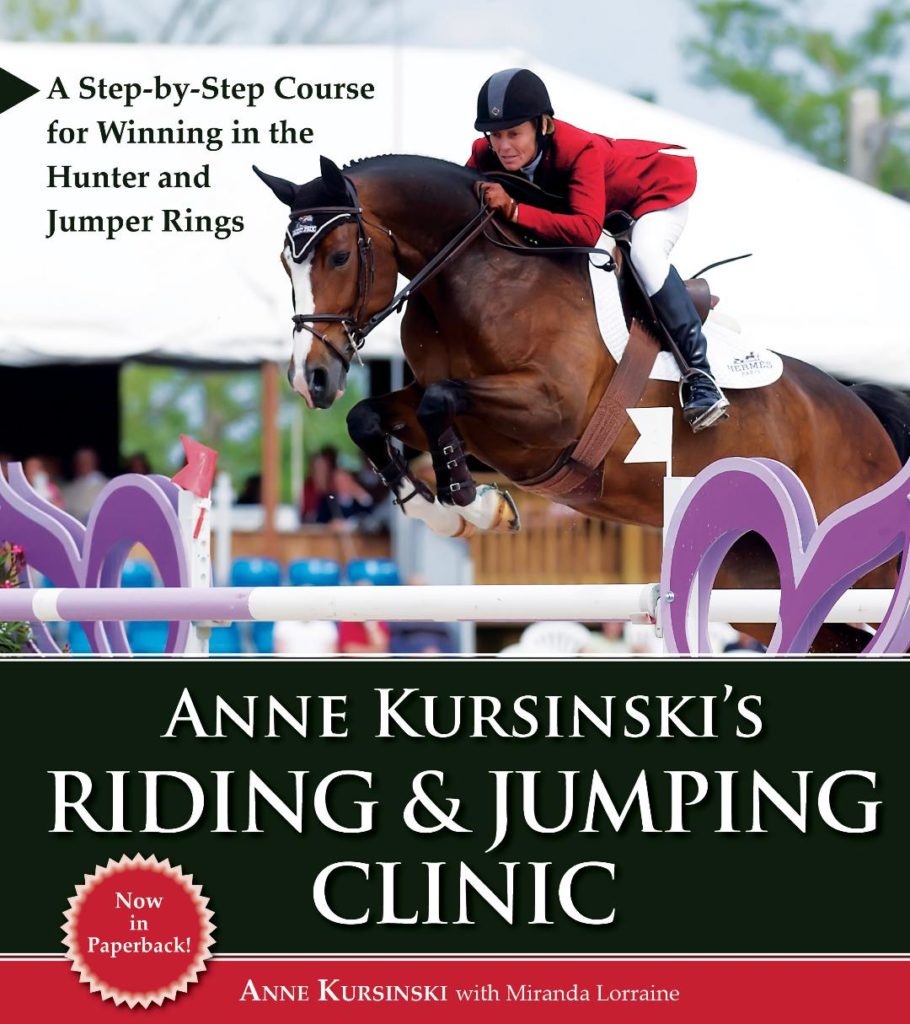This excerpt from Anne Kursinski’s Riding & Jumping Clinic by Anne Kursinski with Miranda Lorraine is reprinted with permission from Trafalgar Square Books (www.horseandriderbooks.com).
Improving Communication—With Your Eyes
In this “jumping without looking” exercise from Anne Kursinski’s Riding & Jumping Clinic, we learn to let the horse find the jump and trust him to find his distance, without us meddling!
Have you ever watched your horse jumping free in a chute or on a longe line? Did you ever see him get to a wrong spot? Probably not. Instinctively, he knows more about jumping than you do—so doesn’t it make sense to use what he knows, rather than to try to tell him how to jump?

Anne Kursinski practicing “jumping without looking” in 1995. Photo used with permission from Trafalgar Square Books.
When I was growing up and riding with Jimmy Williams, he’d have his students go around and around the jumping chute wearing sleep masks over our eyes. He’d turn the horse loose, crack the whip, and we’d just hang on. With no visual information coming in, we had to depend on feel. The experience helped teach us perfect balance, perfect position—and it let each of us feel the horse finding the jump without any help from the rider. It also taught us to trust the horse to do the job, and to go with him. (If you’ve tried jumping on a longe, without reins, you’ve had a similar “trusting” experience.)
The fact that you can trust your horse to jump the jump doesn’t mean that you have no input in his jump, of course. You are responsible for telling him where you want him to go, and how, by establishing the rhythm, the pace, and the line. If you’re clear to him about defining your intentions before the jump—no changing your mind and fussing with him as the fence comes up—he’ll work successfully within them.
You can accomplish the same end that Jimmy achieved by jumping “blind”: Set up your rhythm, pace, and line several strides out, and then focus on something in line with, but other than, the jump—say, a tree beyond the rail around your work area, or a helper—while you let your horse find the distance. Don’t leg him; don’t pull on the reins; don’t interfere with him in any way, but go with him to and over the fence. You’ll find that your peripheral vision is adequate to let you know he’s staying on the line.
Continue with this exercise until you really are jumping without looking—no last-minute sneaking a peek, but keep “looking away” in front, over, and after the fence. You’re developing your ability to gallop to a jump and not take back, letting your horse find the distance—and proving to yourself that you don’t need to interfere as you feel him doing it for you. That way, you won’t be tempted to tear your horse’s head off in front of a fence—or suddenly leg him and run through the fence. Like the great riders, you’ll develop the smoothness of approach that comes from feeling your horse take the rhythm and pace tools you’ve given him and use them to set himself up successfully.
Pick up your copy of Anne Kursinski’s Riding & Jumping Clinic from Trafalgar Square Books today!

